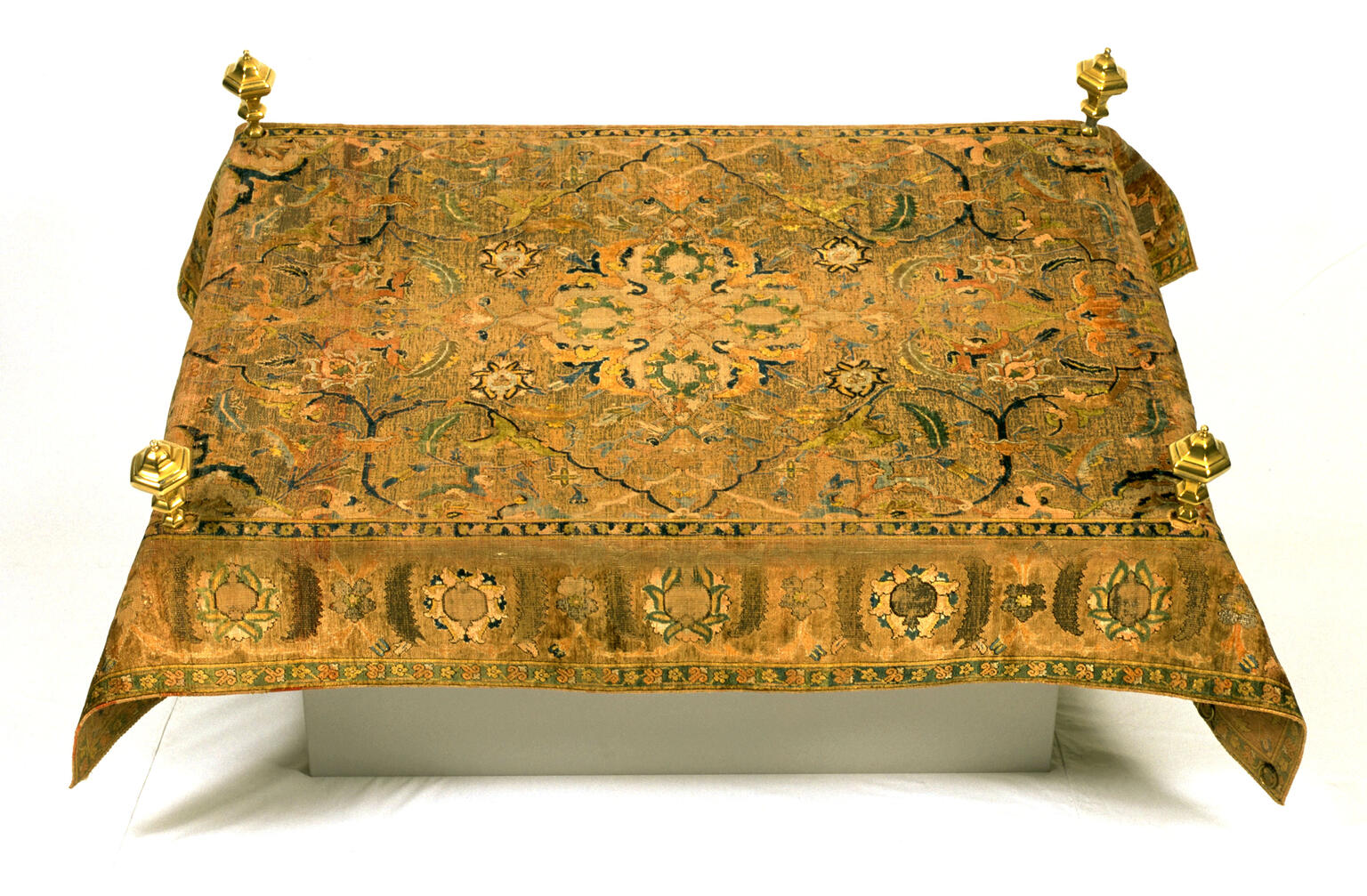Persian Carpet
Artist Unknown
1600–1726
Credits
Collection Jewish Historical Museum, Amsterdam, MB00068. On loan from the Portuguese Jewish Community Amsterdam.
Published in: The Posen Library of Jewish Culture and Civilization, vol. 5.
You may also like
Mikveh Yisra’el (The Hope of Israel)
The initial premise of our argument—and the matters of which we speak are of ancient provenance—is that love can be divided into three categories, which are: the love of something beneficial, the love…
Bayit ne’eman (Faithful House)
In Midrash ḥazit [Midrash Rabbah Song of Songs] it is stated:
And besides that Koheleth was wise, he also taught the people knowledge; ye…
Giv‘at Shaul (The Hill of Saul)
The Israelites were fertile, wa-yishreṣu wa-yirbu wa-ya‘aṣmu very greatly, so that the land was full with them (Exod. 1:7).
“R. Isaac said, Whoever takes pleasure in an optional…
Binah le-‘itim (Understanding of the Times)
First, we will explain the reason for the custom of all Israel to read from Tractate Avot on these Sabbaths. We would like to analyze the meaning of the name of the tractate, why it is called Avot…
Discursos predicaveis que o doctor Haham Yeoshua da Silva pregoe no Kahal Kados Saar a Samayim (Preaching Discourses That the Haham Josua da Silva Preached in the Shaar Asamayim Synagogue)
A King had many natural sons, whom he handed over to lords and princes, his vassals, to rear and feed, and he had another legitimate son whom he greatly loved, and brought him up with him in his…
Discursos predicables y avisos espirituales (Preaching Discourses and Spiritual Advice)
God created man so that man might know His majesty, which is the highest good: knowing Him, being able to love Him, and loving Him, being able to possess…
Engage with this Source
Related Guide
Early Modern Rabbis and Intellectuals on the Move
1500–1750
Carrying books and knowledge, itinerant rabbis and scholars traveled between communities, facilitating cultural exchange.
Related Guide
Early Modern Spiritual Ideologies
1500–1750
Early modern Jewish spiritual life encompassed diverse elements, including theology, ethics, liturgy, and messianism.
Public Access
Image
Places:
The Hague, Dutch Republic (The Hague, Netherlands)
You may also like
Mikveh Yisra’el (The Hope of Israel)
The initial premise of our argument—and the matters of which we speak are of ancient provenance—is that love can be divided into three categories, which are: the love of something beneficial, the love…
Bayit ne’eman (Faithful House)
In Midrash ḥazit [Midrash Rabbah Song of Songs] it is stated:
And besides that Koheleth was wise, he also taught the people knowledge; ye…
Giv‘at Shaul (The Hill of Saul)
The Israelites were fertile, wa-yishreṣu wa-yirbu wa-ya‘aṣmu very greatly, so that the land was full with them (Exod. 1:7).
“R. Isaac said, Whoever takes pleasure in an optional…
Binah le-‘itim (Understanding of the Times)
First, we will explain the reason for the custom of all Israel to read from Tractate Avot on these Sabbaths. We would like to analyze the meaning of the name of the tractate, why it is called Avot…
Discursos predicaveis que o doctor Haham Yeoshua da Silva pregoe no Kahal Kados Saar a Samayim (Preaching Discourses That the Haham Josua da Silva Preached in the Shaar Asamayim Synagogue)
A King had many natural sons, whom he handed over to lords and princes, his vassals, to rear and feed, and he had another legitimate son whom he greatly loved, and brought him up with him in his…
Discursos predicables y avisos espirituales (Preaching Discourses and Spiritual Advice)
God created man so that man might know His majesty, which is the highest good: knowing Him, being able to love Him, and loving Him, being able to possess…



